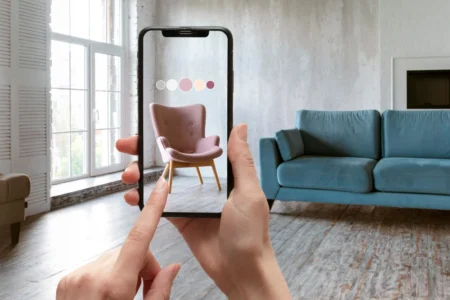 Designing an interior space that is both stylish and functional requires careful planning and attention to detail. By incorporating smart design principles, you can transform any room into a harmonious and inviting environment.
Designing an interior space that is both stylish and functional requires careful planning and attention to detail. By incorporating smart design principles, you can transform any room into a harmonious and inviting environment.
Whether you’re embarking on a full-scale renovation or making subtle updates, incorporating smart design principles will help you achieve a space that is both beautiful and practical. Start with a clear vision, prioritize functionality, embrace smart technology, maximize natural light, and pay attention to scale and proportion to create an interior you’ll love coming home to.
Here are some tips to help you create a smartly designed interior that reflects your style and enhances your everyday living experience.
Start with a Clear Vision For Your Space
Before diving into the design process, take the time to establish a clear vision for your space. Consider the function of the room, your aesthetic preferences, and any specific requirements or constraints you may have. Creating a mood board or collecting inspiration from interior design magazines and websites can help you clarify your vision and guide your design decisions.
For example, if you’re designing a living room, envision how you want the space to feel – cozy and intimate, or open and airy. Use inspirational images to explore different color palettes, furniture styles, and decorative accents that align with your desired ambiance.
Focus on Functionality
A smartly designed interior prioritizes functionality without sacrificing style. Evaluate how you intend to use the space and choose furniture and decor that serve both practical and aesthetic purposes. Opt for multifunctional pieces, such as a coffee table with built-in storage or a sofa bed for accommodating overnight guests.
In the kitchen, consider the layout and workflow to ensure efficient meal preparation and organization. Incorporate ample storage solutions, such as pull-out pantry shelves or overhead cabinets, to keep the space clutter-free and organized.
Embrace Smart Technology
Integrating smart technology into interior design can enhance convenience, comfort, and energy efficiency. Explore options such as smart lighting systems, programmable thermostats, and voice-controlled assistants to automate tasks and streamline daily routines.
For example, installing smart light bulbs with adjustable color temperatures allows you to create different moods and ambiance with a simple voice command or smartphone app. Smart thermostats learn your heating and cooling preferences over time, optimizing energy usage and reducing utility bills.
Maximize Natural Light
Natural light transforms interior spaces, making them feel brighter, larger, and more inviting. Maximize natural light by strategically placing windows, skylights, and glass doors to capture sunlight throughout the day.
Consider using light-colored paint finishes and reflective surfaces to amplify natural light and create a sense of openness. Opt for sheer curtains or blinds that allow sunlight to filter through while maintaining privacy and controlling glare.
Pay Attention to Scale and Proportion
Achieving a balanced and visually appealing interior requires careful consideration of scale and proportion. Choose furniture and decor that are appropriately sized for the room, taking into account the dimensions of the space and the scale of existing architectural features.
For instance, in a small bedroom, opt for a queen or full-size bed rather than a king-size bed, which may overwhelm the room. Arrange furniture in a way that promotes good traffic flow and allows for comfortable movement throughout the space.
By following these tips for creating a smartly designed interior, you can transform your home into a stylish and functional haven that reflects your personality and enhances your quality of life.
Picture Credit: Freepik



